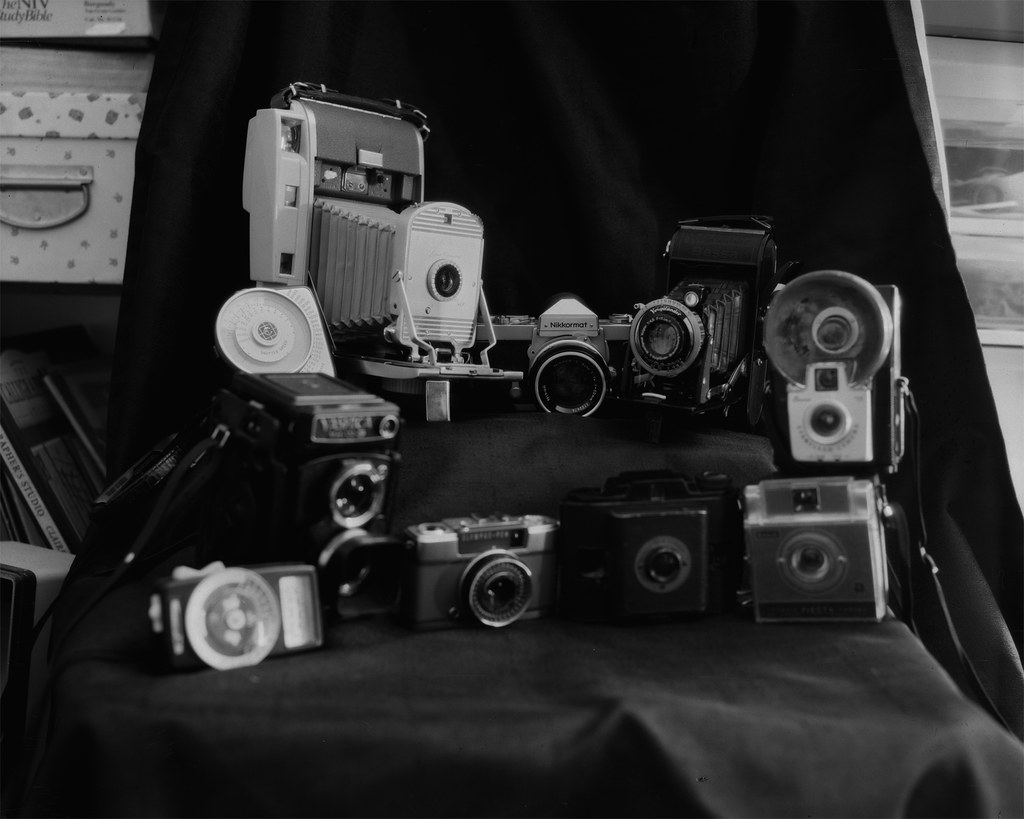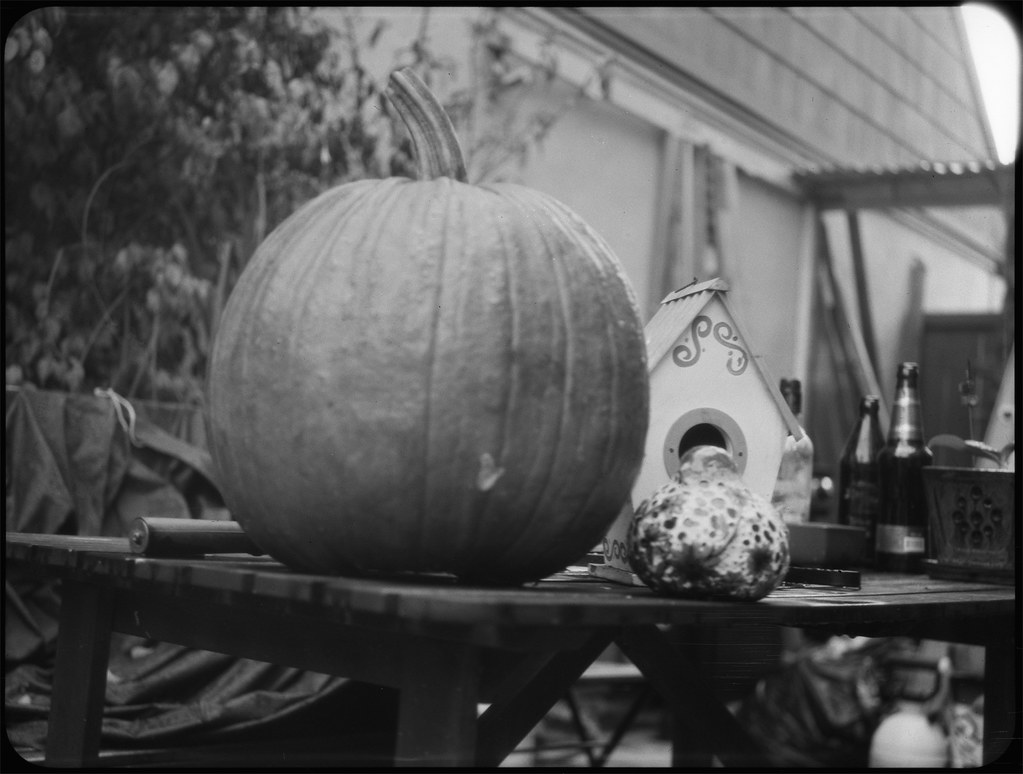 I was given a Polaroid Model 800 Land Camera recently (upper left). It is in very good shape for a camera that was manufactured c. 1957-62. The lens is clean and clear, the bellows are intact and all of the dials and buttons work just like they did 40+ years ago. The only thing that becomes an obstacle to using this camera is that the film is no longer manufactured for it. This particular camera used Polaroid Roll Film which consisted of a 'positive' roll and a 'negative' roll. The camera exposed the negative and then the positive was sandwiched to it and the developer was rolled out between them as they were pulled out of the camera. A minute later you could peel them apart and lacquer your print. Simple, right? Well, even if it was simple, it wasn't profitable for very long. Additionally, if you could find some of this film on say, an auction site, the developer would have long since dried out, rendering it useless for all but a dreary reminder of a wondrous time in photographic history when it only took a minute to get a print.
I was given a Polaroid Model 800 Land Camera recently (upper left). It is in very good shape for a camera that was manufactured c. 1957-62. The lens is clean and clear, the bellows are intact and all of the dials and buttons work just like they did 40+ years ago. The only thing that becomes an obstacle to using this camera is that the film is no longer manufactured for it. This particular camera used Polaroid Roll Film which consisted of a 'positive' roll and a 'negative' roll. The camera exposed the negative and then the positive was sandwiched to it and the developer was rolled out between them as they were pulled out of the camera. A minute later you could peel them apart and lacquer your print. Simple, right? Well, even if it was simple, it wasn't profitable for very long. Additionally, if you could find some of this film on say, an auction site, the developer would have long since dried out, rendering it useless for all but a dreary reminder of a wondrous time in photographic history when it only took a minute to get a print.So what to do with this old beauty? I don't own any shelf queens. All of my cameras are functional and are used. This one should be no exception. I was fiddling around with it, looking at the rollers and how the whole system worked together. It originally made a 3x4 inch image and so that is the size of the mask the the pressure plate sits against. However, there is a larger detent around the mask that just happens to be very close to 4x5 inches! I quickly grabbed a spare sheet of 4x5 film and set it in the back of the camera. A nearly perfect fit!! This could become a nice single shot large format camera. It is smaller than the Speed Graphic (though still plenty big), but a single shot isn't really worth lugging it around town. It could be a nice portrait or still life camera. But first, I should give it a quick test just to see if the focus and shutter are even in the ballpark. I loaded up a sheet of 4x5 Kodak CSG x-ray film in the dark, closed up the back and hoped that the film wouldn't shift. The pressure plate seems a little weak, but it's hard to say what is happening inside once the back is closed. I took it out to the patio where there was a pumpkin sitting on the table with some other sundries. The camera shutter/aperture are linked. You set a dial to the correct EV and the exposure is taken care of by the camera. You don't get any real control over DOF. Focus is with a coupled range finder. Instead of 'snap' or 'click', the shutter goes 'poinnngggg', like you just over-wound your grandfather clock. I took the film out and put it into a 4x5 holder since I don't have any bags that I trust to be light tight, and stored it in the fridge until I had 5 more shots to use with my MOD54 developing rig. A couple of weeks later, I am ready and with fingers crossed, I develop per my usual process with this film:
- Adox Adonal 1:100
- gentle inversions for 30sec
- 10sec inversions every minute for 4min
- rinse
- Ilford Rapid Fixer 1:4 x 4min
- rinse well

No comments:
Post a Comment